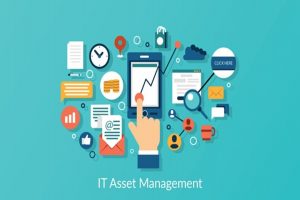What is IT Asset Management?
About IT Asset Management
IT Asset Management is the process of ensuring an organization’s assets are accounted for, deployed, maintained, upgraded, and disposed of when the time comes. IT Asset Management practices have been in place for years with a focus to achieve improved financial performance and to reduce lifecycle costs of the organization’s assets. Now, more than ever, the principles behind IT Asset Management apply to wireless or connected devices. This article will explore why applying these practices to your wireless/connected devices is important and practical approaches to implementing successful IT Asset Management to include all connected devices.
Defined simply, an IT asset includes hardware, software systems, or information an organization values. ITAM is a set of business practices that combines financial, inventory and contractual functions to optimize spending and support lifecycle management and strategic decision-making within the IT environment.
Connected device populations are skyrocketing now and will be for the foreseeable future. What started out as a cell phone is now multiple connected devices at work, in our homes, in our cars and in every facet of our lives. How many devices do you have connected in your office, home, and vehicles? Once you start counting you may be quite surprised.
Internet of Things
As we discussed in a previous blog, IoT (the Internet of Things) is a part of our daily lives, from sharing documents, hosting virtual meetings, accessing work data from your personal laptop, and more. Spoiler alert before you start counting your devices- the average house has 50 connected devices in 2021! Growth projections indicate today’s 35 billion IoT devices will grow to over 75 billion by 2025.
Keeping track of the devices is the responsibility of IT Asset Management. Knowing what you have, where it is, how much it costs and what it does for you will allow you to then manage it. With billions of devices in your future, ensuring you can proactively track devices, costs, locations, security, and purpose is a complex business function that requires a focused strategy, organizational buy-in and software tools for tracking and reporting.

… But where do you start?
Having a comprehensive mobility policy is a great first step. Understanding why you have connected devices, appropriate use cases, security requirements, device upgrade policies and cost allocation policies are all important components for your policy. The best thing about a mobility policy is that it drives behavior. This behavior will ultimately lead to effective cost management while still providing technology that delivers information, communications and business processes resulting in measurable efficiencies and performance.
Device costs can vary greatly. Today’s smartphones can exceed $1,000 while connected monitoring devices may be less than $50. Knowing which devices are appropriate for each use case allows you to set standards that can lead to efficient management practices on device operating systems (OS), mobile applications, security applications, proactive device re-fresh and managing device refurbishments and spares. Without an accurate inventory of the devices deployed within your ecosystem this would not be possible.
Pertinent device information can be stored in numerous systems. It is not practical for one solution to be the system of record for all the information your organization values on your connected assets. However, realizing and understanding this will allow you to create ownership of asset information that facilitates the maintenance of accurate data components. These data components can then be shared and consolidated while maintaining a high degree of inventory integrity. Today, many enterprises rely on Mobile Device Management or Endpoint Management solutions to provide security and control to connected devices. These solutions can capture critical data elements that can contribute to a successful Asset Management solution.
An Endpoint Management Solution can provide you tracking information on key identifiers:
- Device Model
- IMEI
- Telephone/IP number
- Operating System
- Carrier
- Mobile Applications and their versions
However, financial information like rate plans, contract commitments, monthly costs, and features will have to be captured from the wireless carrier. Combining operational and financial information details into a Reporting Engine will provide you with complete information on all your connected devices. This is critical for educated business decisions on future strategies and investments.
Enterprise Solutions
Enterprises today utilize many solutions to support their IT Asset Management program. Each solution has its strengths and weaknesses in how it approaches managing IT Assets. Some are focused on centralized IT service requests and inventory management, some use discovery tools to identify connected components and software licenses, while Endpoint Management solutions provide security and device management. Understanding your business requirements thoroughly to determine the best fit with your organization and priority takes time. Many of these solutions are designed for more traditional IT assets or Wireline Telecommunications services and are not aligned with characteristics of mobile/connect devices and the key data elements that must be tracked for a successful program.
Knowing what you have, where it is, what it costs and what it does is challenging to understand unless you take the steps to put in processes to capture data as devices are deployed. Trying to go in after the fact will yield less than desired results and abandoned assets that will cost your organization for years to come.
Contact OVATION Wireless to discuss how we can design, implement and manage a comprehensive Mobile Asset Management program to establish and maintain control over your connected devices. Our Endpoint Management Solution encompasses full asset and expense management for your organization.



